TL;DR
- SmPC is a Summary of Product Characteristics, it is the main structure for explaining pharmaceutical products’ characteristics in the EU.
- SmPC is a legal document used by healthcare professionals that provides information on the drug including the set dosage and other key information.
- Due to the volume of label changes per year (tens of thousands), the ability to manage these changes can do longer be managed by adding labor resources.
- Manually detecting updates can be frustrating, time consuming, and can lead to patient safety issues and regulatory challenges.
What is SmPC (Summary of Product Characteristics)?
An SmPC or Summary of Product Characteristics is a legal document providing a structured list of essential information on every drug e.g. set dosage and potential side effects, but it also includes much more.
Pharmacists, doctors, nurses, and other healthcare professionals rely on this information to accurately prescribe and inform their patients about drug usage.
It is an essential part of the marketing authorization approval of any new drug or medicine.
What is in SmPC?
The information contained in the SmPC is critical for the proper and safe use and distribution of medicine. Inside there is both qualitative and quantitative data specific to each drug’s benefits and risks.
Some of the required information includes: the composition of the medicine, interactions with other medications, concomitant disease, organ impairment, impacts on pediatric, elderly, and pregnant populations, genetic factors, and more. Basically, this is life or death information and even contains instructions on what to do in those dire situations. That is what makes the updates and accuracy of SmPCs so crucial for patient safety.
Why do SmPC Updates Occur?
Various situations can occur to require a change to the SmPC and lead to tens of thousands of changes per year.
The two most common triggers for SmPC updates are Adverse Drug Events and changes in safety communication standards. When Adverse Drug Events occur after the product has hit the market, they are reported to national health authorities and the responsible company is notified that an update is required. Safety communication updates occur regularly to ensure compliance and patient safety standards are met.
Why is it important to be able to detect updates to SmPC?
As compliance standards change, so do updates in SmPCs. Since this information is constantly updated throughout the drug’s lifecycle, it can be very difficult to track and manage, nevermind very time consuming.
Many major pharmaceutical companies have so much data spread across so many systems that it’s hard to know where things are. Data is stored in multiple locations (RIM systems, Sharepoint, etc.) and they all need to be manually scanned to pull the updates to send to the regulatory authorities. These RIM systems are so vast that it can take hours to search and sort through the thousands of data points and it can be a real challenge for label authors and is subject to inadvertent manual errors.
Alternative to Manual Data Search
Imagine if you had a google-like search that could do all of that for you? But even better than a google search, one that is life sciences industry-trained, that could go behind your firewall, crawl your databases, detect changes and organize your data for you.
Our technology does just that. ComplianceAuthor™ connects, crawls, and aggregates these repositories and file shares to extract text and gain insight into the data and content. Intelligent insight from the aggregated data is dynamically formatted and passed downstream for omnichannel knowledge flows that comply with client and industry standards. These knowledge flows are sent to the publishing platform, where they are transformed into word-based XML-controlled compliant components with properties in agency-neutral formats with tags for downstream transformation, reuse, and formatting. This approach allows current content repositories to stay intact while finding, indexing, and sustaining compliance


